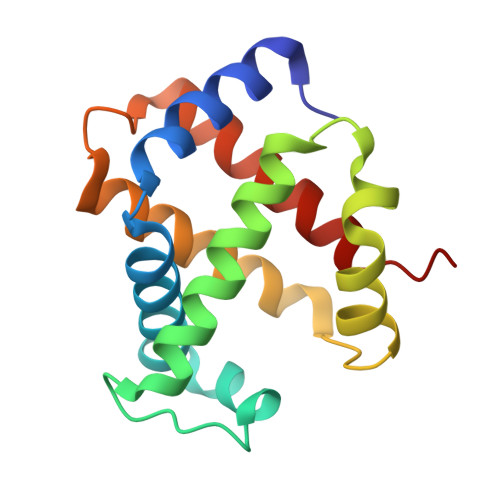Design, Synthesis, and Investigation of Novel Nitric Oxide (NO)-Releasing Aromatic Aldehydes as Drug Candidates for the Treatment of Sickle Cell Disease.
Huang, B., Ghatge, M.S., Donkor, A.K., Musayev, F.N., Deshpande, T.M., Al-Awadh, M., Alhashimi, R.T., Zhu, H., Omar, A.M., Telen, M.J., Zhang, Y., McMahon, T.J., Abdulmalik, O., Safo, M.K.(2022) Molecules 27
- PubMed: 36296435
- DOI: https://doi.org/10.3390/molecules27206835
- Primary Citation of Related Structures:
8EGI - PubMed Abstract:
Sickle cell disease (SCD) is caused by a single-point mutation, and the ensuing deoxygenation-induced polymerization of sickle hemoglobin (HbS), and reduction in bioavailability of vascular nitric oxide (NO), contribute to the pathogenesis of the disease. In a proof-of-concept study, we successfully incorporated nitrate ester groups onto two previously studied potent antisickling aromatic aldehydes, TD7 and VZHE039, to form TD7-NO and VZHE039-NO hybrids, respectively. These compounds are stable in buffer but demonstrated the expected release of NO in whole blood in vitro and in mice. The more promising VZHE039-NO retained the functional and antisickling activities of the parent VZHE039 molecule. Moreover, VZHE039-NO, unlike VZHE039, significantly attenuated RBC adhesion to laminin, suggesting this compound has potential in vivo RBC anti-adhesion properties relevant to vaso-occlusive events. Crystallographic studies show that, as with VZHE039, VZHE039-NO also binds to liganded Hb to make similar protein interactions. The knowledge gained during these investigations provides a unique opportunity to generate a superior candidate drug in SCD with enhanced benefits.
Organizational Affiliation:
Department of Medicinal Chemistry, The Institute for Structural Biology, Drug Discovery and Development, School of Pharmacy, Virginia Commonwealth University, Richmond, VA 23298, USA.


















